Last updated: 23 June 2023
Updated April 2023. Without a doubt Agriturismo is one of Italy’s best kept secrets. But what actually is an Agriturismo? Well keep reading, dear reader, keep reading…
The word agriturismo is actually a combination of the Italian words agricoltura (agriculture) and turismo (tourism).
What is Agriturismo?
Well, rather loosely, Agriturismo is an Italian farm stay. But after our recent trip to Italy, I discovered Agriturismo in Trentino is so much more than that.
Connecting with passionate people running independently owned and operated properties which are generally first and foremost, a working farm. Even from the moment I set foot on the properties I felt at ease. It’s a simple way of life, with a distinctly slower pace which, may I add, was something I very quickly got on board with.
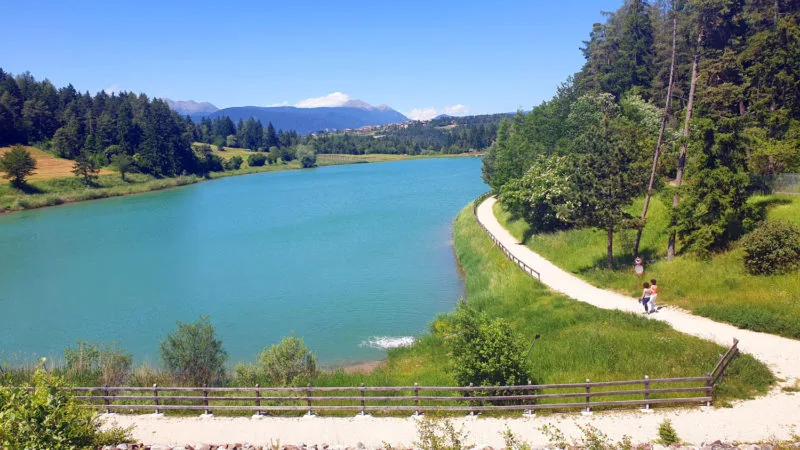
The rural tranquillity of being woken early in the morning to the sounds of farm animals, like a rooster crowing in the distance and images of sipping my espresso with views of the snow-capped mountains of the Dolomites is just a much more tranquil way to start my day to the sounds of my neighbours car alarm on repeat.
Agriturismo Accommodation
Accommodation standards at an Agritur can vary from one farm to another. Some are simple, rustic and full of character, while others are downright luxurious. You might find your bed for the night is in a converted barn, or a purpose-built annex off the main house. The gold lies in the other two other key components of agroturismo; the people and the food.
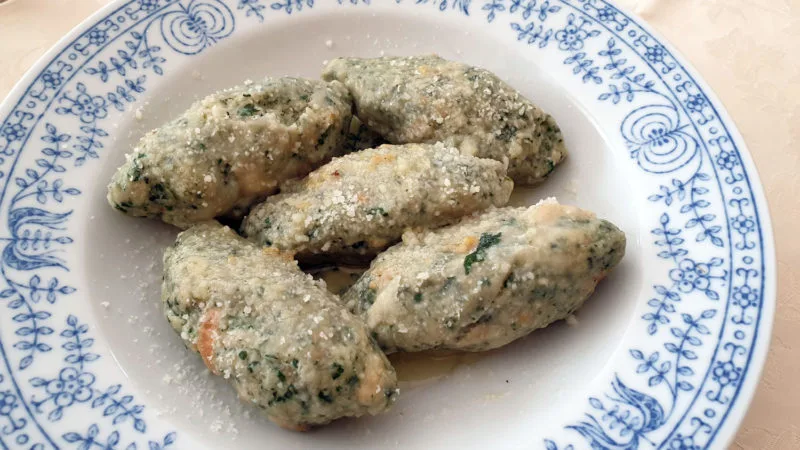
Agriturismo Hosts
The people speak for themselves. A warm and hospitable approach to hosting although you might find there’s a language barrier between you and your hosts. And why not?! They’re first and foremost farmers, only secondarily are they hosts. It might be worthwhile heeding some advice here and take the initiative and download a translator if your Italian is anything like mine molto basico!
There are clear societal benefits to the Agritur model. With areas of Italy that have quietened off, lowering birth rates, communities facing austerity and other struggles, it’s here your tourism dollars can make a huge impact. Through Agriturismo, farmers and small producers no longer have to solely rely on the outputs of their farms’ for income. The introduction of Agriturismo has given new life to some areas of the country where new industry just seemed inconceivable.
Food at Agriturismo
The second key component of Agritur is the food. Most Agriturismo in Italy will include an on-site restaurant. It’s here you can expect to sample produce from the very farm of which you’re staying, a farm nearby or other local merchants. Items like hand-pressed olive oil, eggs from the chickens you saw earlier that morning, berries plucked straight from the bush outside your window.
Some Agritur will even offer sophisticated menus, refining traditional dishes, and rival city based contemporary chefs with their unusual and daring pairings of seasonal ingredients.
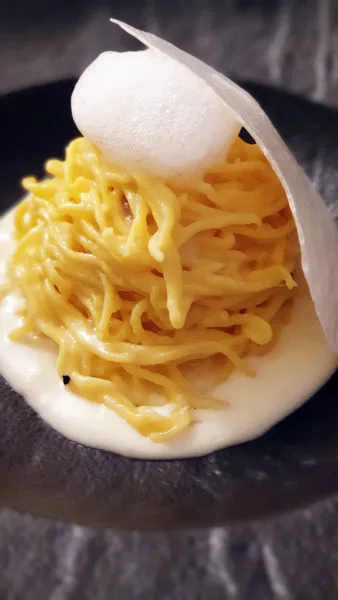
While not all these will be the swanky or Michelin-starred restaurants, you can be sure there’s a top-notch classic nonna’s recipe somewhere in the menu, and from first hand experience I can attest there’s often no better dining than at an Agriturismo!
The food that we’ve experienced on our frequent trips to Italy is one of the main reasons why keep returning, and shall continue to do so in the future. The quality on food on offer is really second to none.
Finding the Perfect Agriturismo in Trentino
There are subcategories of Agriturismo in Trentino and further afield, with some farms focusing on animals, outdoor activities like hiking but for me, it’s the culinary-centric Agriturismo that peaked my interest and had my tummy rumbling. With hands-on experiences and tastings centered around the cuisine of the area so it’s under this premise we set off to discover more Agriturismi in Trentino.
Maso Flonkeri
Nonna Ponomarenco of Maso Flonkeri creates extraordinary syrups and beauty creams from fruits and seasonal plants.
We join Nonna in her garden where we pick velvety pink roses from her garden that we can smell before we can see them. The aroma is incredible, almost surreal, that these plush vibrantly coloured flowers smell, and well, like a rose.
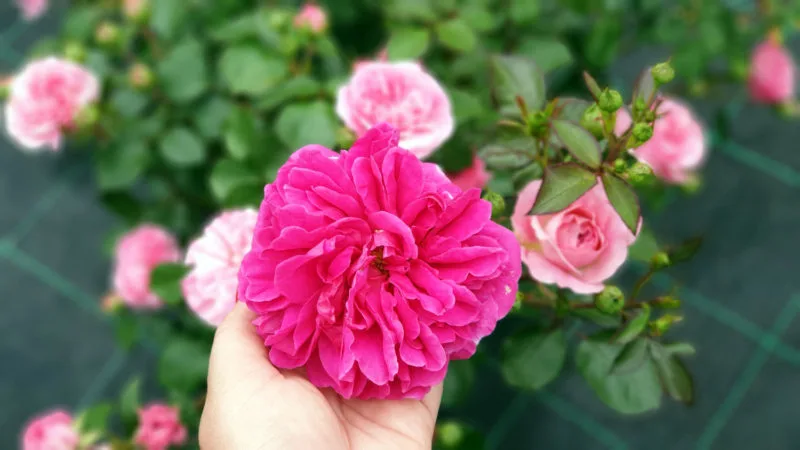
With Nonna help, we’re making a rose syrup. The activity is to pick flowers from her garden then pluck the petals from each bloom. It seems destructive to pluck petals from these stunning flowers, throw them into an oversized metal pot after which they’re mulched down with water, lemon juice and a whole lot of sugar, but I’m assured by Nonna that it’s all worth it in the end.
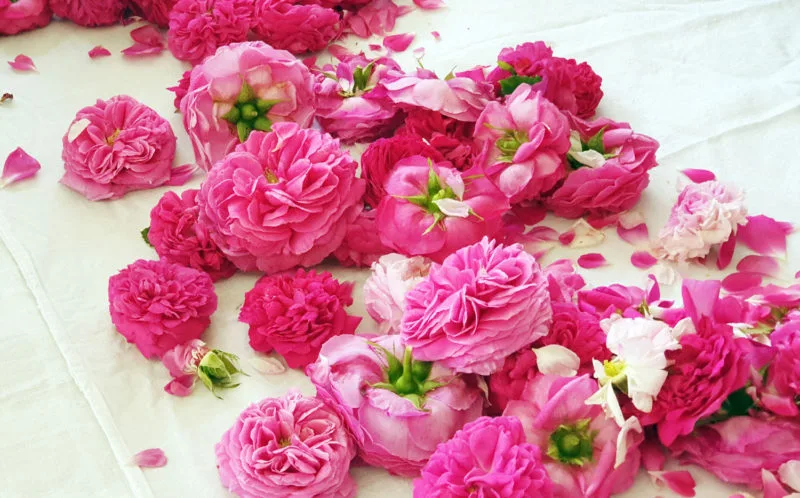
While Nonna works her magic on the rose-petal-mulch, we settle in for a lengthy lunch around her long table. A chefs selection of charcuterie to start, followed by a secondi of oversized home-made gnocchi like I’ve never seen before. All washed down with cocktails made from, you guessed it, roses.
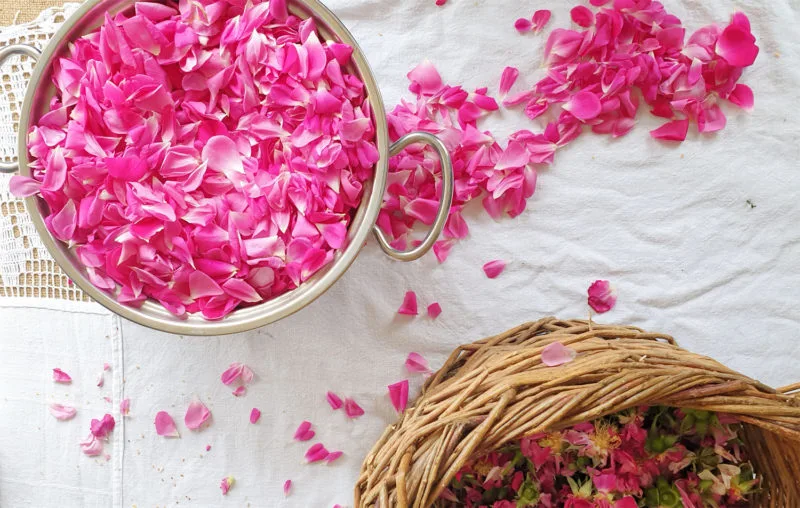
The few rooms at Maso Flonkeri are modern, comfortable and quiet. My room faces the back deck and toward the mountain range at the back of the property.
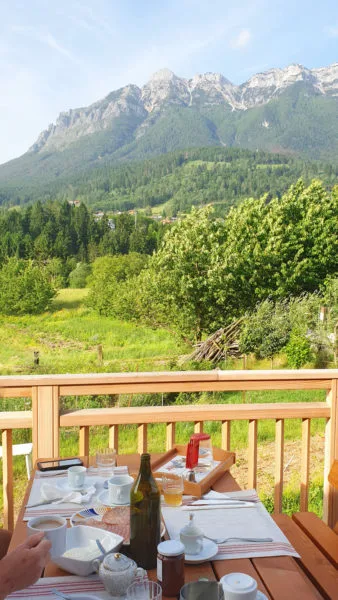
Berry House
As the name suggests, this Agriturismo specialises in the cultivation of berries, where guests are welcome to tour the greenhouses and sample fresh fruit straight from the plant.
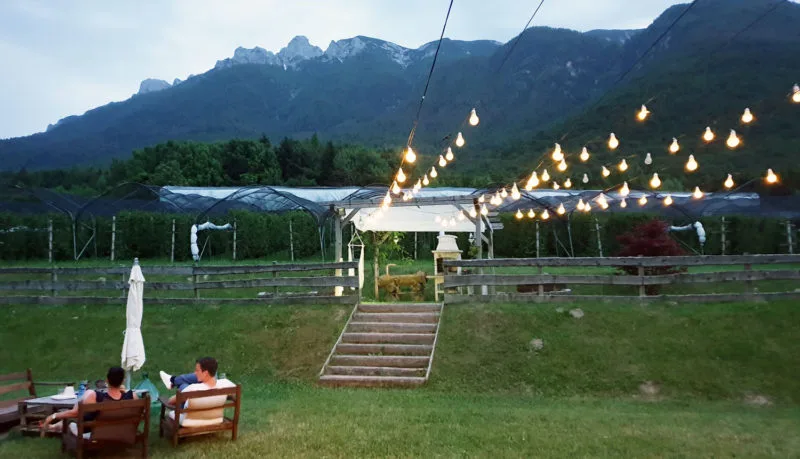
With party lights zigzagging across the front lawn, distressed timber chairs and a tonne of props for fun photos makes the Berry House a little different to the rest.
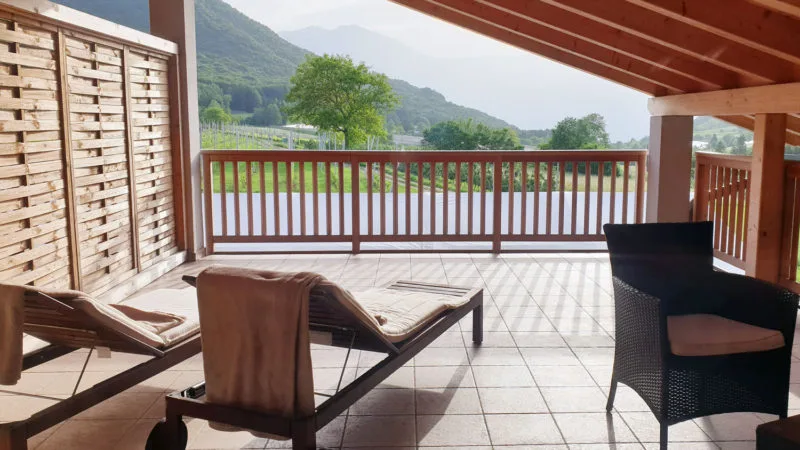
Perched on the Vigola plateau, all six guest rooms, one with an indoor swing, and another with a generously oversized deck overlooking the property, are uniquely styled from one another and yet strikingly similar through with the use of reclaimed wood from the local region.
It’s the restaurant that drew us to the Berry House where each dish unsurprisingly features berries in one format or another. Lucky for me, I love them all.
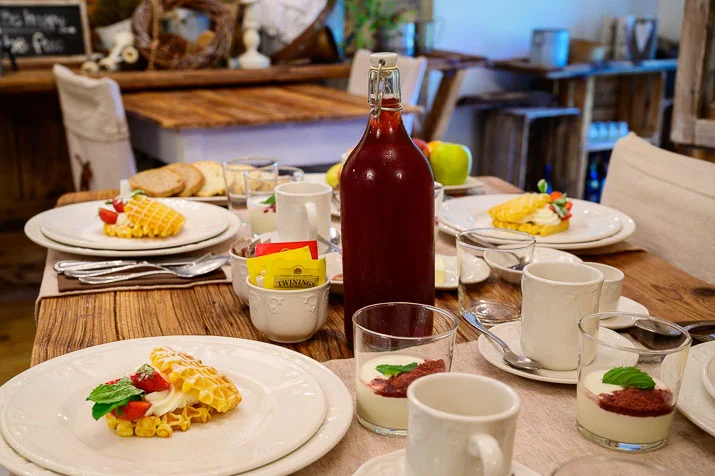
Breakfast is a casual affair consisting of wholesome options including homemade sweet treats, snacks and jams along with a range of intensely flavoured home grown fruits.
Dinner is a whole production. Four courses each with a selection of two options, plus a vegetarian alternative which is not listed on the menu but is available upon request.
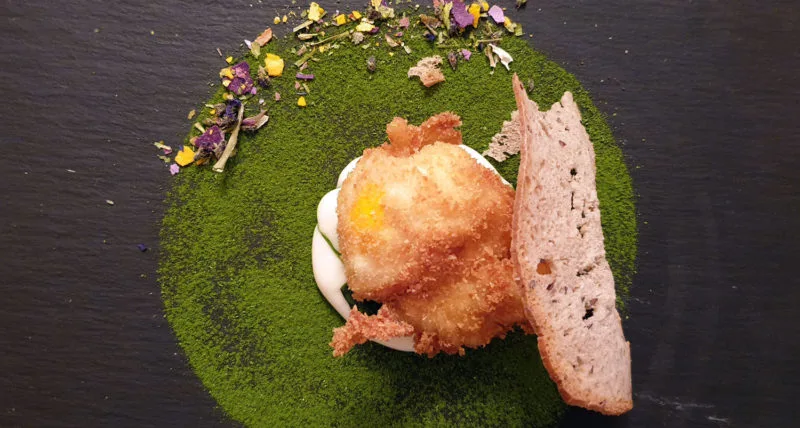
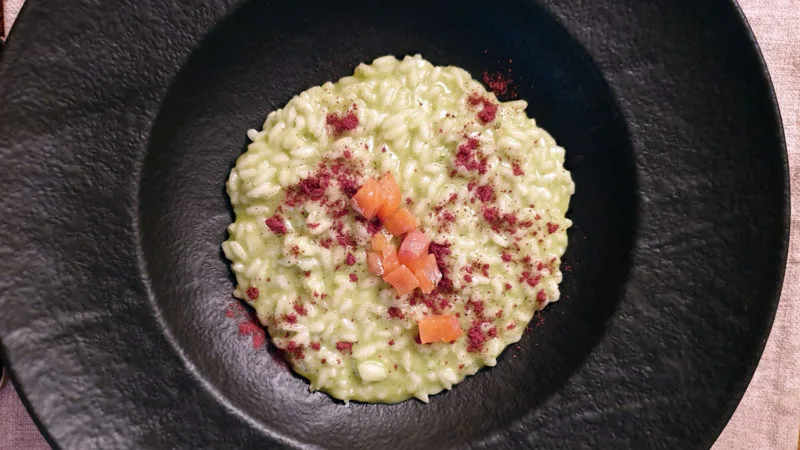
A delightful surprise was the local Casolet cheese. Flavoured by the summer pastures, it has a delicate and sweet flavour. Subsequent courses delivered numerous creative displays of provincial influences, like the use of mountain pine in a creamy risotto, and a tangy raspberry gastrique, with the sweet and sour profile cutting through the fat of the duck. Yum!
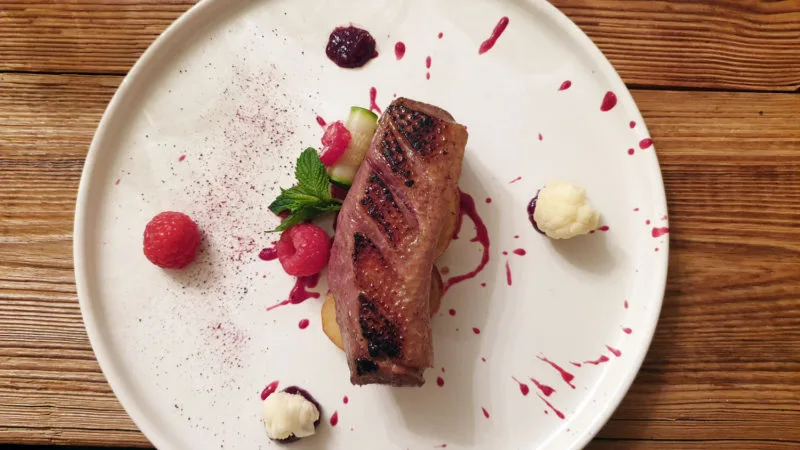
Dessert was one of those courses that you talk about hours and days after the fact. The juxtaposition of flavours alongside exquisite presentation make these desserts easily rival world-class restaurants and flavour notes like smokey hay that irrevocably scream farm-life. It’s one experience to write home about!
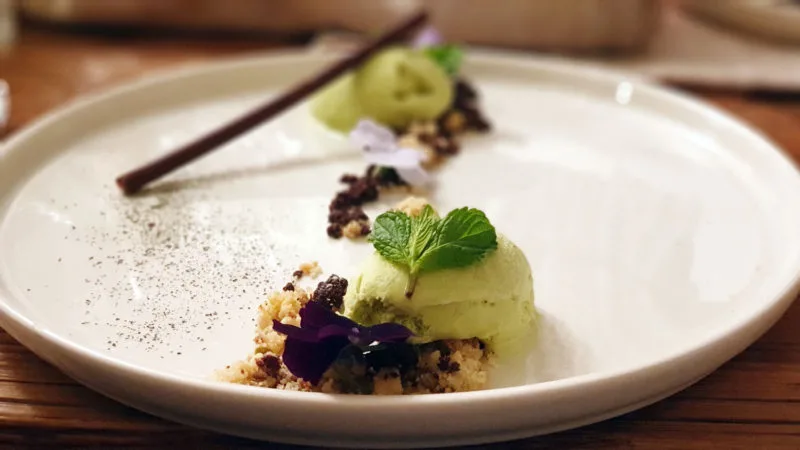
Antico Fienile
Andrea and Nicole welcome you at Antico Fienile farmhouse is located in Mezzocorona, a small town in Piana Rotaliana.
Situated amongst the calmness of the mountains and surrounded by lush vineyards, this agroturismo is situated perfectly for onward travel to Val di Non, Val di Sole and Val di Cembra.
There is accommodation on site however we’re here to dine at the onsite restaurant, Locanda Camorz.
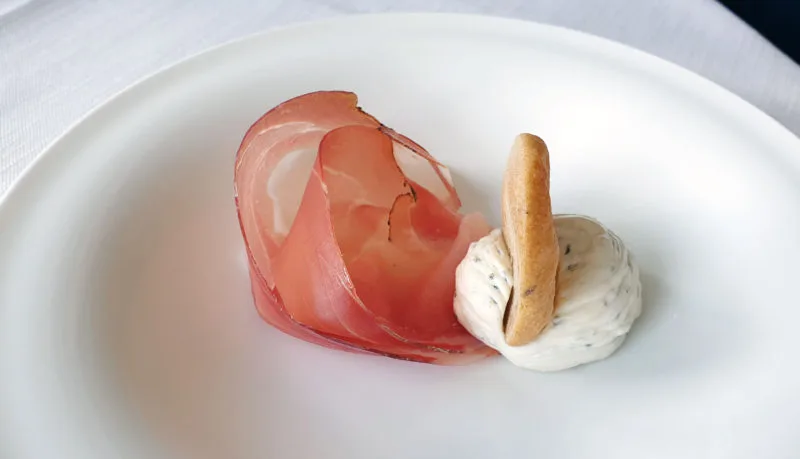
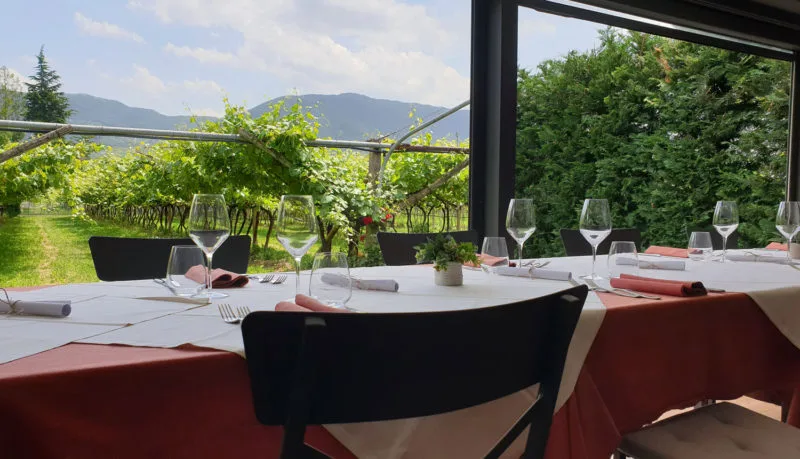
The stunning panoramic attic is laid out with a view of the vineyards. Chefs here acquire fresh local products and serve guests typical Trentino cuisine washed down with wine from the region. It is all oh-so-good, stand out dishes include a low-temperature cooked veal rump with a tuna mousse, and potato dumplings stuffed with a pungent Morna cheese but be sure to save room for the homemade desserts!
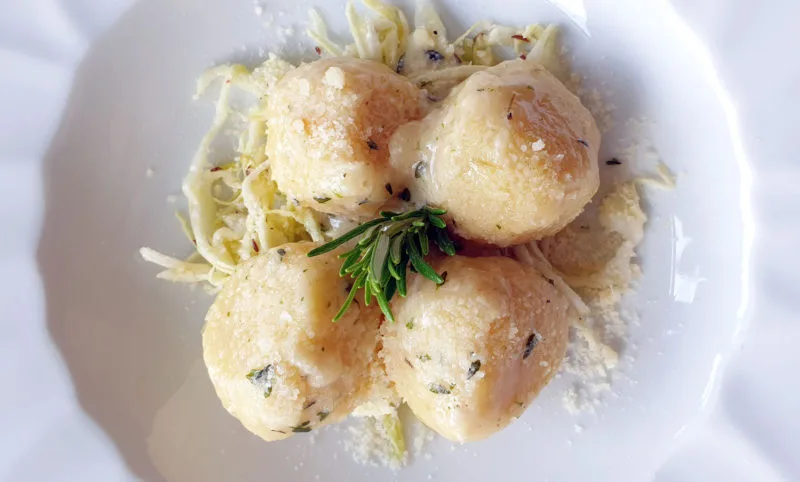
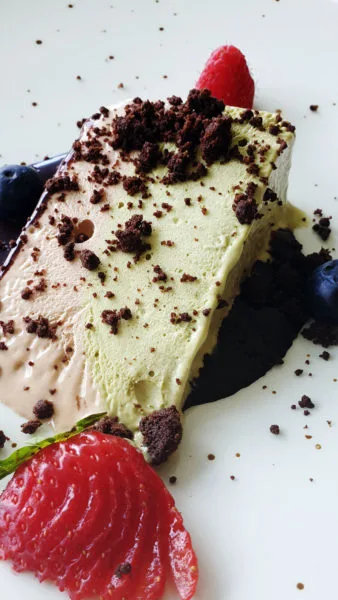
Azienda Agricola Calliari
We meet Flavia at Calliari, a mountain farm in the small village of Malosco in the Val di Non.
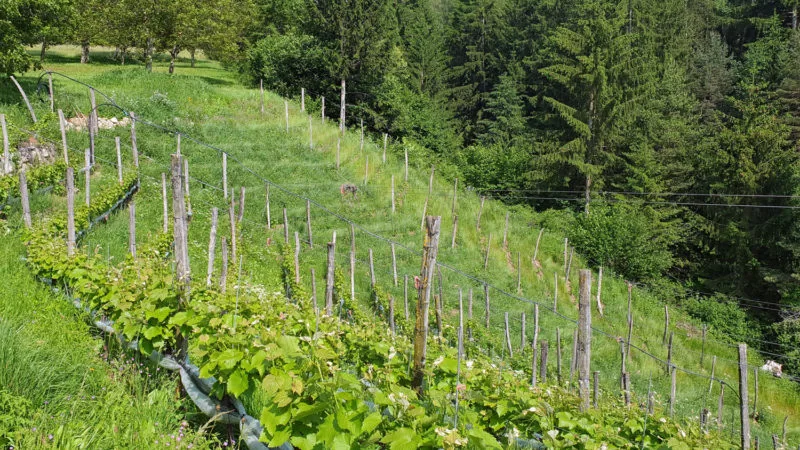
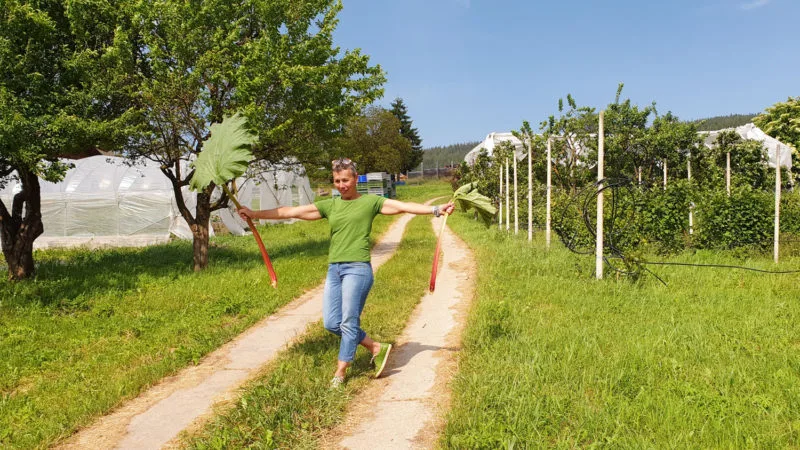
Flavia grows grows an array of fruits, vegetables and nuts in season and aims for high product quality and not necessarily large quantities of produce. As Flavia takes us on a tour of her farm, past cherry trees, a blooming patch of rhubarb and vines firmly clinging to a sloping mound, her passion shines bright as she talks passionately about her crops as if they’re her babies.
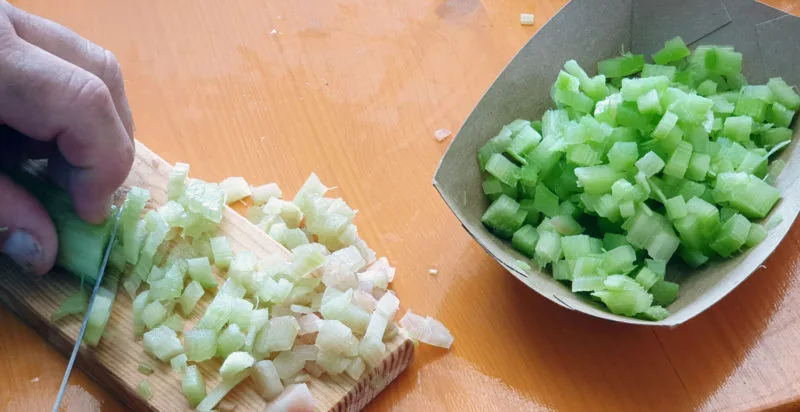
As cows get fed bales of hay, and the rain falls briefly outside, we gather around tables in Flavia’s kitchen for todays’ activity, jam making. Flavia is opening her garden, her kitchen and her heart to us, to transform some of her tangy home grown rhubarb and apples into a jam that we can take home with us.
If you’re fortunate enough to experience a jam and cheese tasting, Flavia will take your tastebuds on a sweet and savoury adventure all at the same time. Discover local cheeses like Nostrano Coredo, Fontal and Trentingrana made from the very milk her cows produce and an array of jams made in-house.
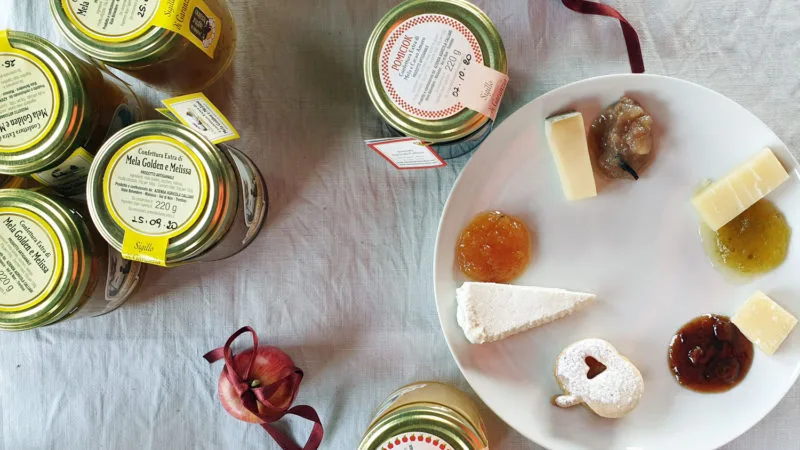
Activities and Experiences at Agritur in Trentino
Il Leprotto Bisestile
Leprotto Bisestile sits in the small community of Bosentino, on the Vigolana plateau at almost 700 meters above sea level, with enchanting views over Lake Caldonazzo which lies below.
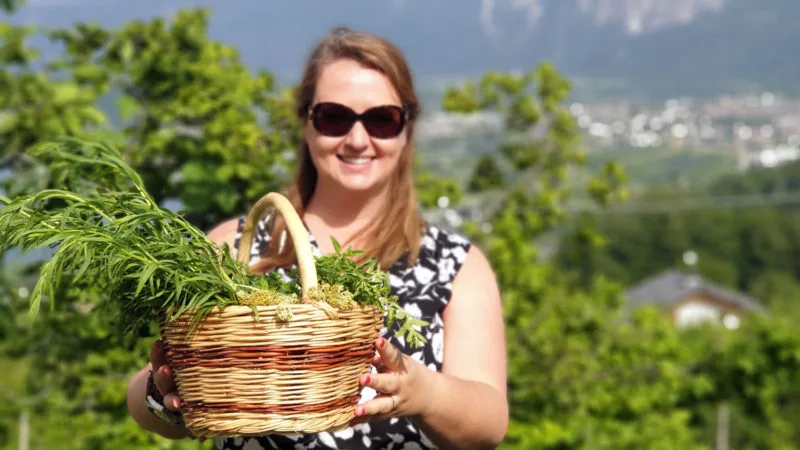
Amongst the crisp mountain air, Francesca cultivates plants to transform into herbal teas, cosmetic creams and, the experience we were here for, creating aromatic salts.
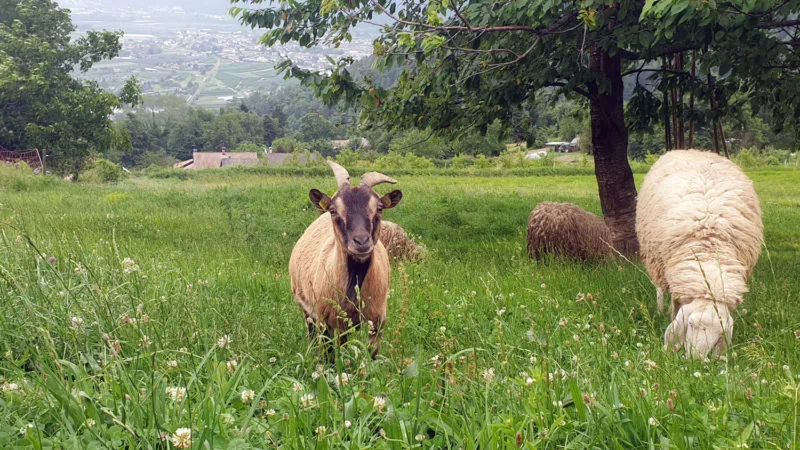
Leprotto Bisestile is also home to rescued animals. Donkeys and goats graze on vividly green sloping pasturage, chickens cluck away in their coop, a chinchilla and an overly curious turtle.
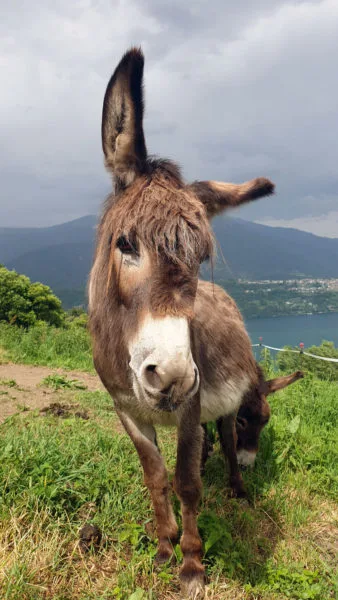
Home to a blooming herb garden that would send any chef into a spin, we pick a bouquet of herbs and flowers, before tearing them up and muddling with a mortar and pestle and adding salt.
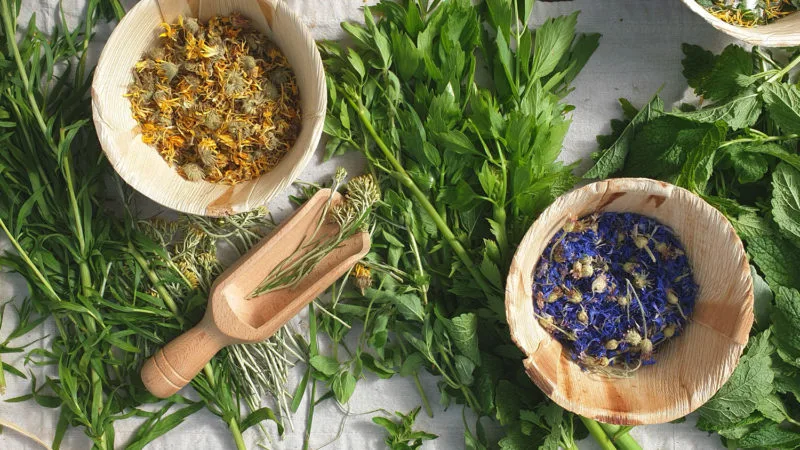
We package our herb salt into little packages we can easily slip into our suitcases. What a wonderful souvenir to take home and use for months to come!
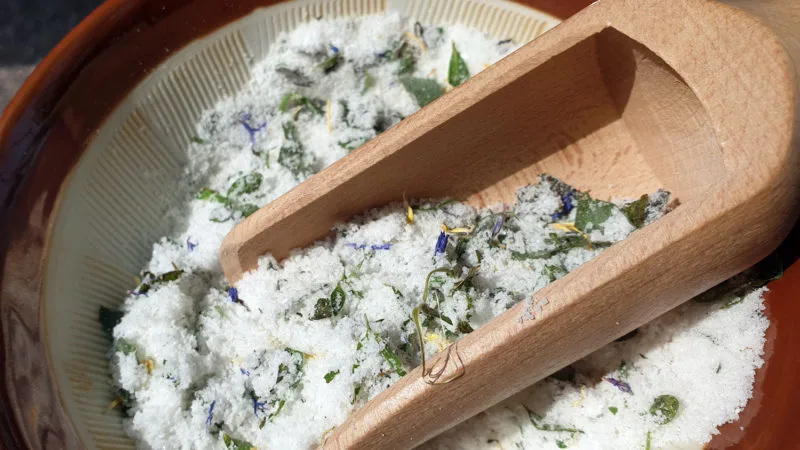
Mieli Thun
Andrea Paternoster is a third generation keeper of bees at Mieli Thun.
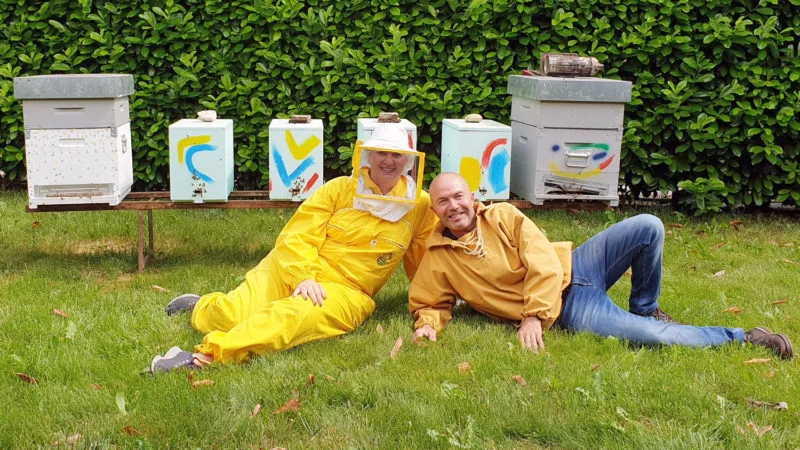
Producing exclusively Italian honeys, Andrea’s team move hives at least 60 different locations to develop honeys unique to each species of flower of particular places across the country. After all, honey is a product of the flower, not a product of the bees.
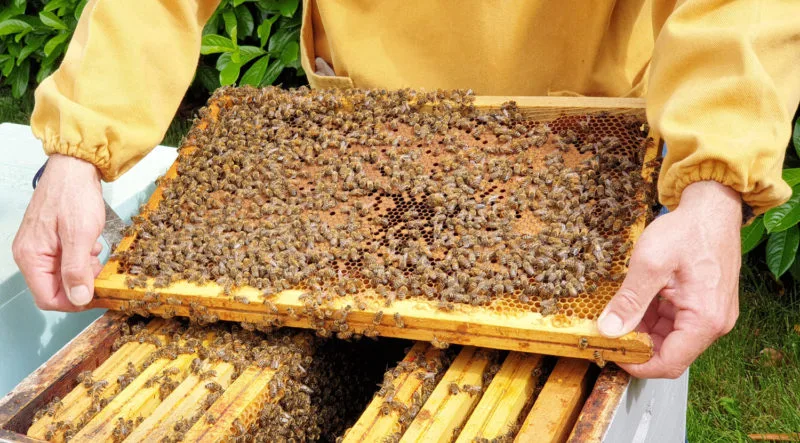
The honey is respectfully and carefully harvested so as not disrupt the bees’ natural cycle, including moving hives only by night, when the colony is asleep.
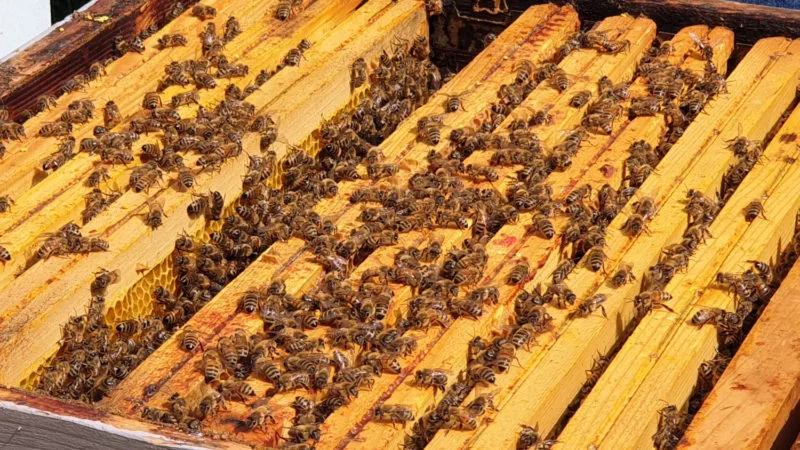
At Mieli Thun, downstairs is a comprehensive shop where you can sample some 15 different types of honey, sometimes more depending on the season and availability. However it’s upstairs is where the magic happens.
Upstairs is a tasting room from where people including world class chefs can learn and discover more while exploring honey’s properties of aroma, texture, hues, and other subtleties reveal a lot about the flowers’ origin.
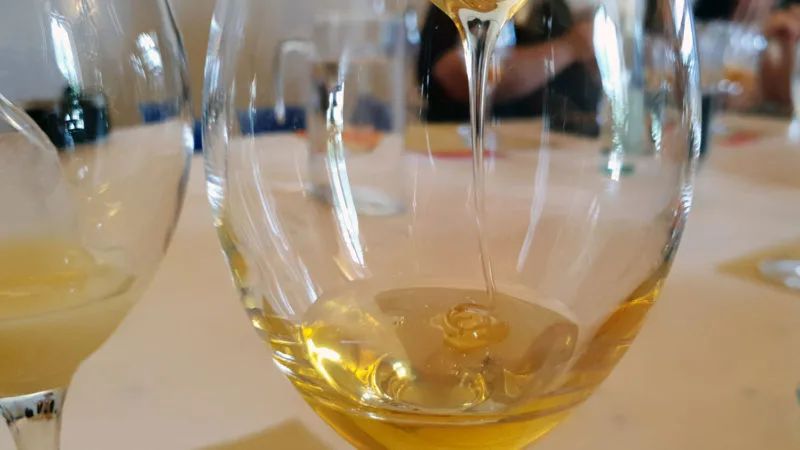
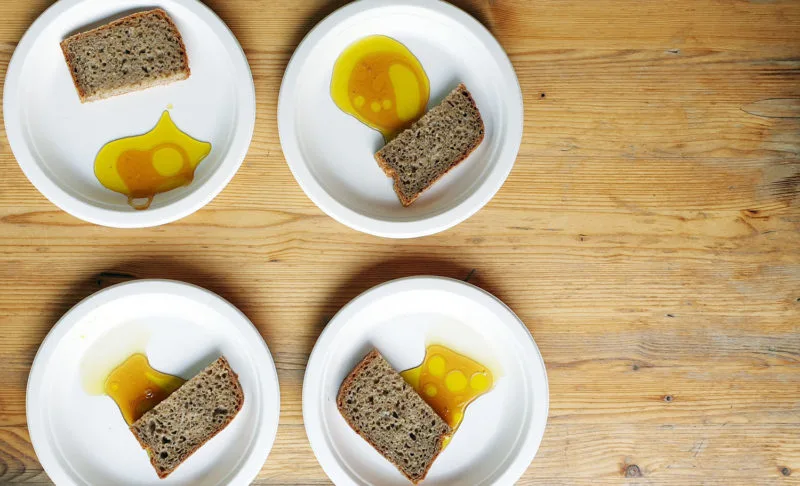
To appreciate the sweet nectar a little more, to make one kilo of honey, bees need to visit some six million flowers.
I’ll stop here to let that sink in…
In the upstairs tasting gallery, we learn about honeys made from Heather, Linden and Wildflower. Using multiple senses to observe the consistency and colour, the smell before tasting each one by one. An experience I thoroughly enjoyed, so much I bought more to take home!
Caseificio Sociale Di Coredo
Rather unassuming from the outside, this cooperative or Social Dairy, has been thriving since 1965, by acquiring raw cow’s milk straight from nearby farms and transforming it into cheese and other by-products.
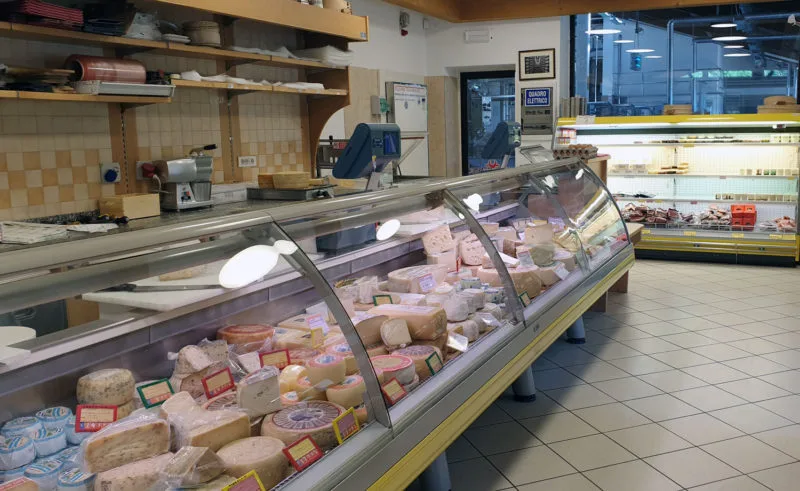
For more than half a century, roughly 80% of the milk given to the Coredo dairy has been transformed into Trentingrana, a hard grainy cheese and the main dairy product of Trentino.
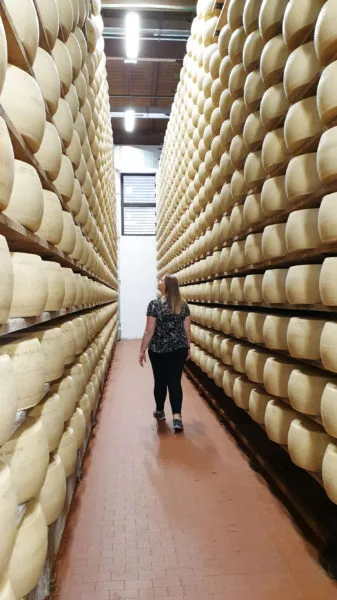
The mountain milk used to make cheese, in particular Trentingrana DOP, retains trace flavours of grass from open-pasture grazing of the cows which gives the Trentingrana a familiar yet distinct flavour.
DOP at the end of Trentingrana is short for Denominazione di Origine Protetta (literally “Protected Designation of Origin”). As the the name suggests, this certification ensures quality control and stringent rules around where products are locally grown and packaged.
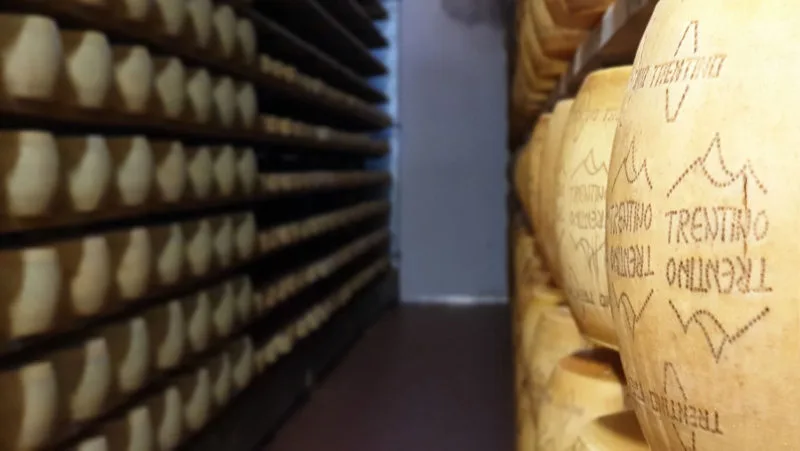
The remaining 20% is transformed into other delicious cheeses like Nostrano Coredo, Predaia, and Roen which are available in cooperatives in the valley, or in the dairy’s shop where local products or raw produce such as milk, butter can be bought. The perfect place to stop by for supplies before a picnic at the nearby lake Lago Di Coredo.
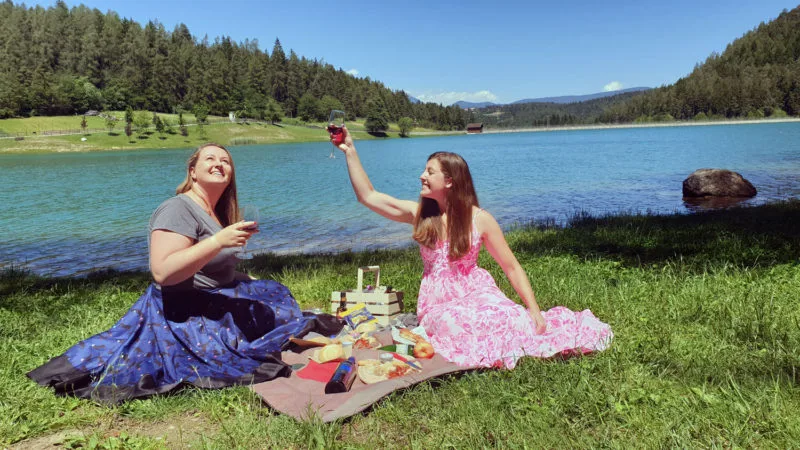
Solarium Predaia
We’re greeted by Lino Rizzardi.
Perched high up on the pass at 1254 meters above sea level with panoramic views over the valley below and the snow-capped Brenta Dolomites in the distance sits Solarium Predaia.
The air up here is crisp, clean and the atmosphere is calm.
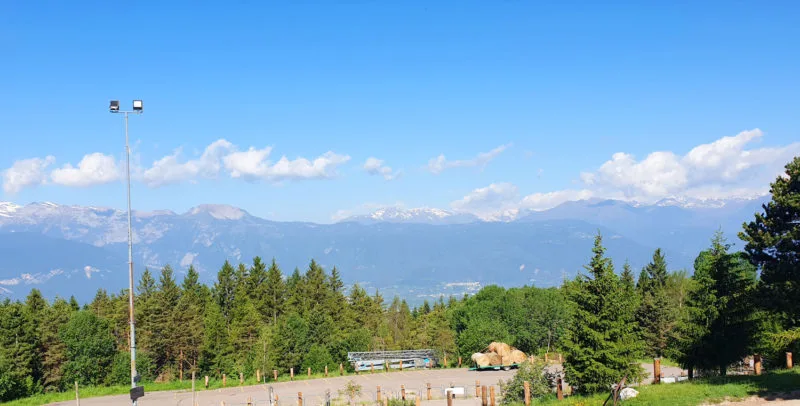
Part farm, part restaurant, part area for adventure with e-biking, hiking, horse riding and more all available over the meadows of bright green and vivid flora. In winter, this is skiing country with a slope descending right in front of the terrace. The chalet surrounded by woods and large meadows in feet of snow.
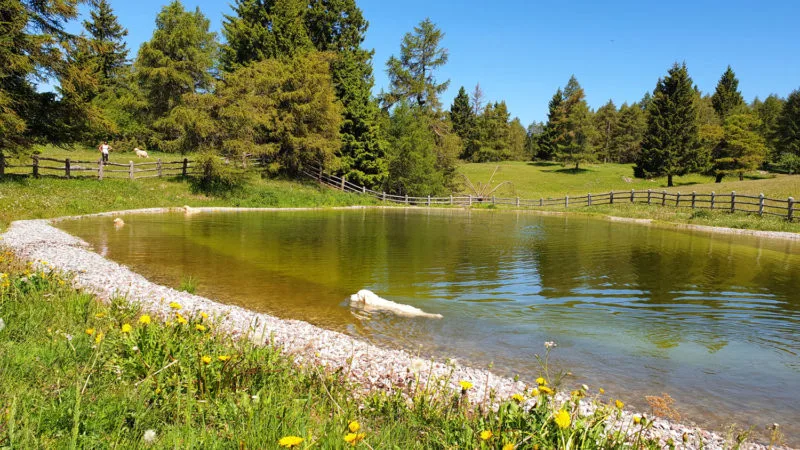
There’s an onsite restaurant which has a distinctly alpine feel to it. Serving up Trentino traditional dishes with products sourced from Val di Non and nearby territory.
Lino takes us into the woods, pristine pastures and talks to us passionately about and the environment. He also introduces us to Anita, who we can milk if we’re up to the challenge.
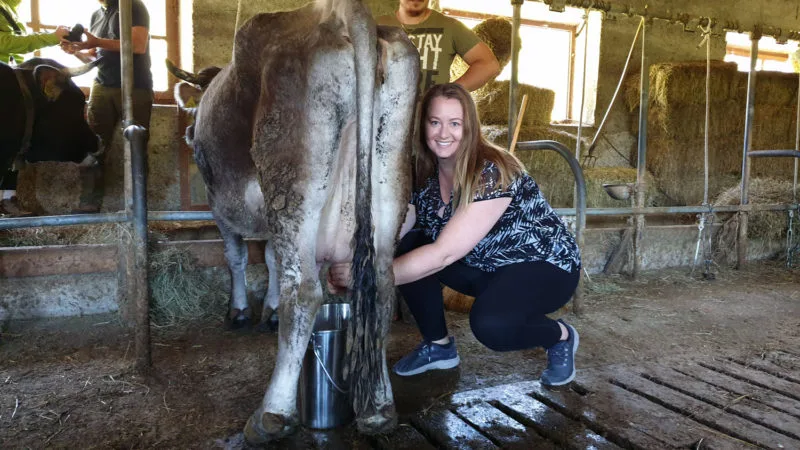
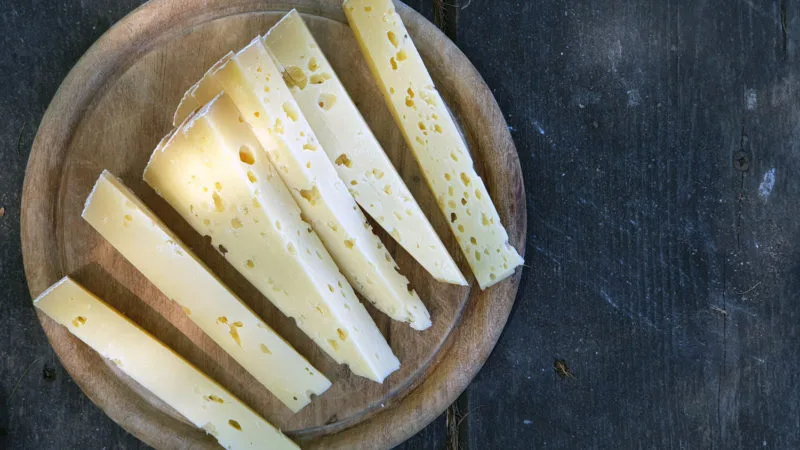
There are plenty of other activities available, like helping Igor make cheese, but we just don’t have time to do them all. We stroll through the fields, talk agriculture and flora, before sampling some cheese that’s made from the milk of Anita and her friends.
How Can I Visit an Agriturismo in Trentino?
Realistically this part of Italy is best explored by car. I would recommend picking up a hire car at your entry point, be it main town or airport and explore Trentino from there.
A visit to an Argitur should be booked in advance either by contacting them directly, or by booking online through Italy’s Agriturismo site. Some, not all, have a minimum stay of 2 nights or more so check this in advance if you’re only needing one night there are plenty who can accommodate you if you’re simply passing through.
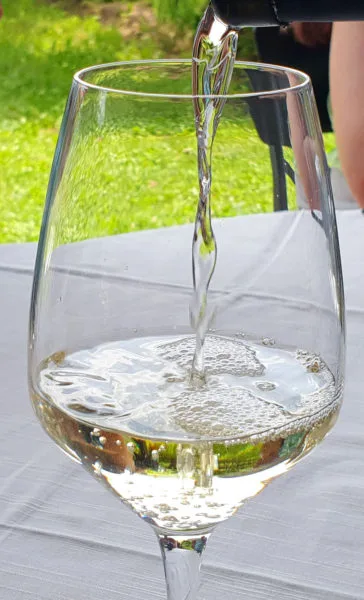
The windy roads that take you from the lakes and up into the mountains are tight in parts but it can be your own little adventure. As someone who gets motion-sickness I’d recommend popping some tablets to combat car sickness prior to setting off as these often take 30-90 mins to act within your body.
Wherever you choose to stay, your Argitur will provide you with everything you need in terms of linen and towels, there’s no need to bring your own. Just bring merry and curious yourselves and be prepared for a warm welcome. So what are you waiting for? Trentino awaits!
This trip was hosted by Visit Trentino. All creative license was retained to write this article and all opinions, and overly positive testimonials remain our own.
[…] previously written about my love of Italian agriturismo. To make the most of this aspect we recommend hiring a car to […]
[…] The Best Agriturismo in Trentino […]
Your stay in Trentino looks amazing! What a beautiful and peaceful place to slow down and eat what looks like the most delicious food. Will definitely visit the next time I am in Italy!
Thanks so much for leaving us a comment, Vanessa. We really appreciate it. You are absolutely right, it was an incredibly beautiful part of Italy to visit and we can’t recommend it enough. And the food…OH MY! You’ll love it!